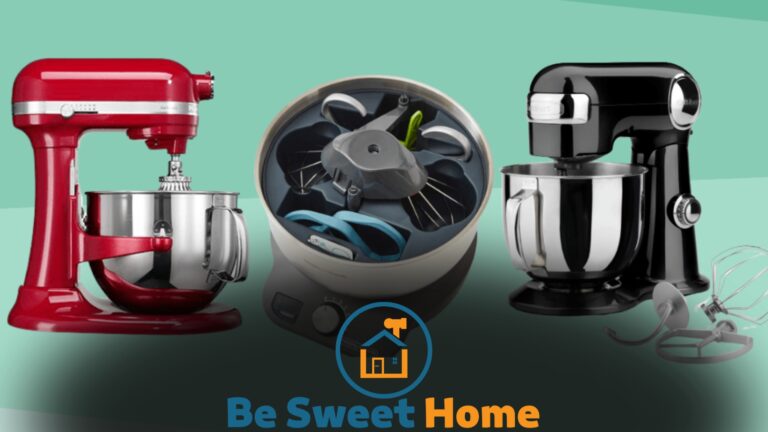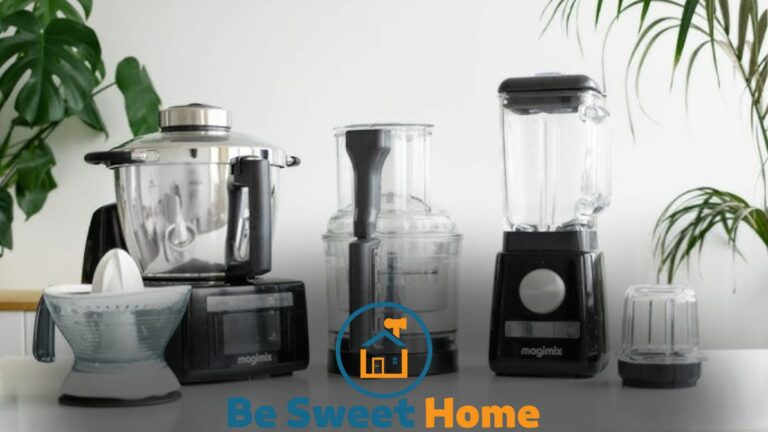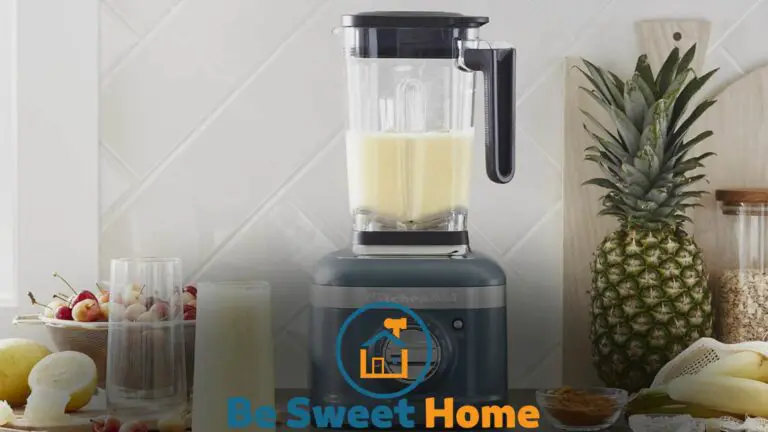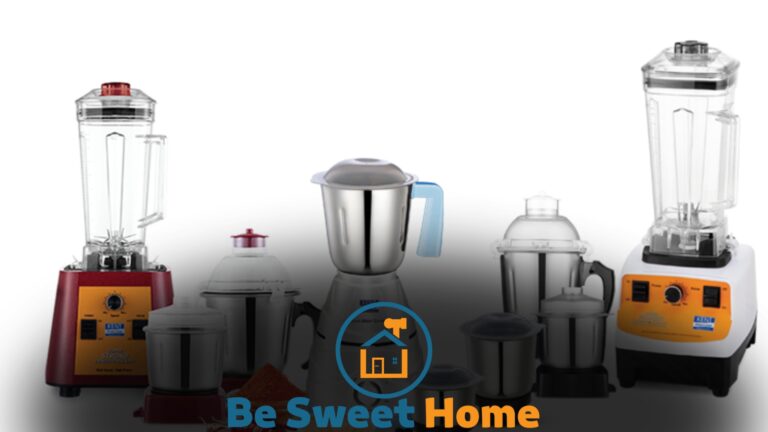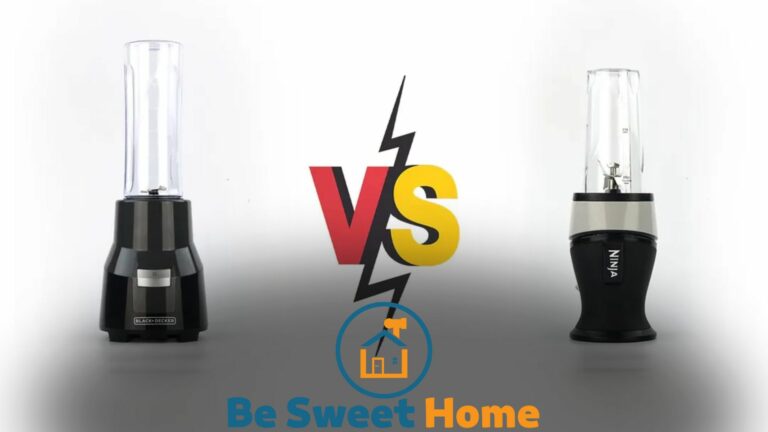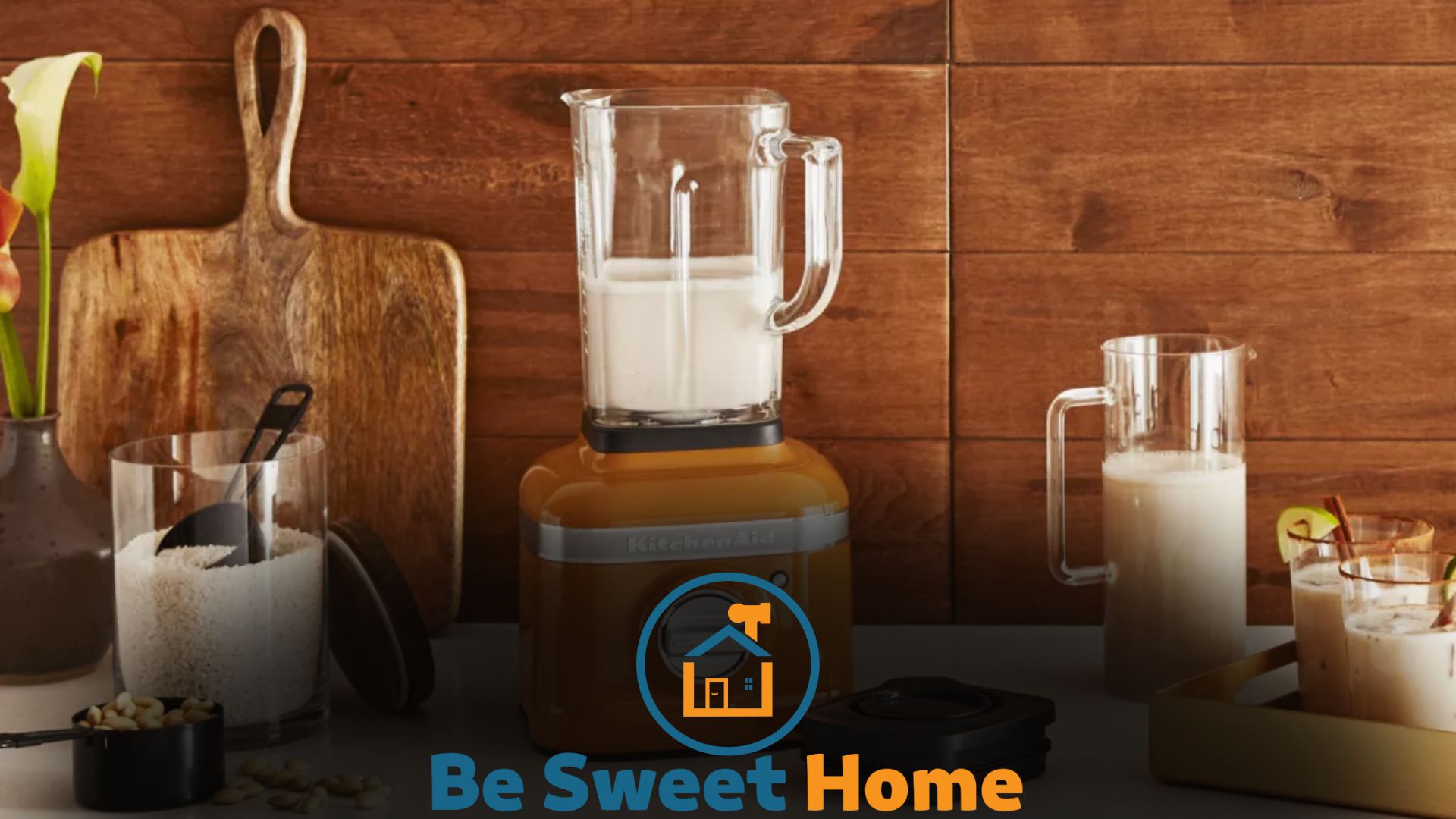

Yes, Kitchenaid blenders are dishwasher safe. Washing Kitchenaid blenders in the dishwasher is safe for easy and convenient cleaning.
Avoid using abrasive scrubbers or harsh detergents. Kitchenaid blenders are popular, providing powerful blending capabilities for various tasks. Whether you are making smoothies, pureeing soups, or crushing ice, these blenders offer durability and functionality.
One of the major concerns for users is the cleaning process. Fortunately, Kitchenaid blenders are designed to be dishwasher safe. This means that you can place the removable parts, such as the jar, lid, and blades, in the dishwasher for a hassle-free cleaning experience.
However, it is important to avoid using abrasive scrubbers or harsh detergents that can potentially damage the blender.
By following these simple care instructions, you can enjoy the convenience of a Kitchenaid blender without worrying about the cleaning process.
Benefits of Dishwasher-safe Blenders
Dishwasher-safe blenders have become increasingly popular in modern kitchens. Their easy and convenient cleaning, time-saving solution, and hygienic and sanitary options offer several benefits that make them a top choice for amateur and professional chefs.
Let’s take a closer look at each of these advantages:
Easy and Convenient Cleaning
Cleaning up after a meal can sometimes feel like a hassle, but this task is made much easier with a dishwasher-safe blender. No more worrying about disassembling various parts and spending precious time scrubbing away stubborn residue.
Place the blender jar, lid, and other removable components in the dishwasher, and let it do the work for you. This saves time and effort and ensures a thorough and consistent clean every time. Say goodbye to handwashing and hello to a hassle-free cleaning experience.
Time-saving Solution
In our busy lives, time is a valuable commodity. Choosing a dishwasher-safe blender can significantly reduce the time spent cleaning kitchen appliances.
Instead of spending extra minutes washing individual parts by hand, you can load everything into the dishwasher, set it to the appropriate cycle, and continue with other tasks or relax.
At the same time, it does the work for you. This time-saving solution allows you to focus on what truly matters – creating delicious meals and enjoying precious moments with your loved ones.
Hygienic and Sanitary Options
When it comes to food preparation, maintaining proper hygiene is paramount. Dishwasher-safe blenders provide a hygienic and sanitary option, ensuring your blending components are thoroughly cleaned and free from harmful bacteria.
The dishwasher’s high temperature and intense water pressure eliminate germs and unwanted residues, giving you peace of mind and a safer culinary experience.
Using a dishwasher-safe blender, you can rest assured that each blend is as clean and sanitary as possible.
How to Properly Clean a Kitchenaid Blender
A KitchenAid blender is a versatile and essential tool in any kitchen. Whether you use it to make smoothies, soups, or delicious sauces, it’s important to keep it clean to ensure its longevity and optimal performance.
In this step-by-step guide, we’ll walk you through cleaning your KitchenAid blender, recommend cleaning products, and provide tips on removing tough residues.
Step-by-step Guide to Cleaning the Blender
Cleaning your KitchenAid blender is a straightforward process that can be done in a few simple steps:
- Start by unplugging the blender from the power source to ensure safety.
- Disassemble the blender by carefully removing the pitcher, lid, and other detachable components.
- Rinse the pitcher and lid under warm water to remove any visible debris.
- Fill the sink or a large bowl with warm water and a few drops of mild dish soap. Submerge the pitcher and lid in the soapy water.
- Using a soft sponge or brush, gently scrub the pitcher and lid to remove any remaining food particles or stains.
- Rinse the pitcher and lid thoroughly with clean water to remove all traces of soap.
- Allow the components to air dry, or use a clean towel to dry them completely before reassembling the blender.
- Once the components are dry, reassemble the blender, ensuring each piece is properly aligned and fitted.
- Your KitchenAid blender is now clean and ready for your next culinary creation!
Recommended Cleaning Products
While warm water and mild dish soap are usually sufficient for cleaning your KitchenAid blender, you may sometimes encounter stubborn stains or odors that require extra help.
Here are some recommended cleaning products:
| Product | Recommended Use |
|---|---|
| Vinegar and Baking Soda | Mix equal parts of vinegar and baking soda to create a paste. Apply the paste to stubborn stains and let it sit for a few minutes before scrubbing with a sponge. |
| Lemon Juice | Squeeze fresh lemon juice into the blender pitcher and let it sit for a while to remove odors. Rinse thoroughly with water before reuse. |
| Bottle Brush | If your blender has hard-to-reach areas, a bottle brush can be useful in removing any remaining residue or food particles. |
Tips for Removing Tough Residues
Occasionally, you may encounter tough residues requiring more effort to remove. Here are some tips to help you tackle them:
- For sticky residues, soak the pitcher and lid in warm, soapy water for an extended period before scrubbing.
- If there are stubborn stains, create a paste of baking soda and water, apply it to the stained areas, and let it sit for a few minutes before scrubbing.
- For mineral deposits or hard water stains, soak the components in equal parts vinegar and water before scrubbing or scrubbing with a soft brush.
- Always rinse the components thoroughly after cleaning to ensure no residue is left.
Following these cleaning tips and using the recommended products, you can keep your KitchenAid blender sparkling clean and ready for your next delicious creation!
Understanding Dishwasher-safe Components
When cleaning your Kitchenaid blender, it’s important to know which parts are dishwasher-safe and which ones require handwashing.
Understanding these dishwasher-safe components saves you time and ensures your blender’s longevity and performance.
Different Parts of the Blender That Are Dishwasher-safe
Before you start loading all the pieces of your Kitchenaid blender into the dishwasher, it’s crucial to know which parts can withstand the dishwasher’s high heat and water pressure.
The following components of the blender are considered dishwasher-safe:
- Blender jar: The main blending container, usually made of glass or BPA-free plastic, is typically safe to be placed in the dishwasher. However, checking the manufacturer’s instructions is important to ensure compatibility.
- Lid and cap: The lid and cap, which provide a secure seal during blending, are usually designed to be dishwasher-safe.
- Removable blades: Most Kitchenaid blender models feature removable blades that can be detached from the base for easy cleaning. These blades are generally safe to go in the dishwasher.
Importance of Following Manufacturer’s Instructions
When it comes to dishwasher safety for your Kitchenaid blender, it’s crucial to follow the manufacturer’s instructions. Each blender model may have specific guidelines on which parts are dishwasher-safe and which require handwashing.
These instructions are usually provided in the user manual or listed on the manufacturer’s website.
By adhering to the manufacturer’s instructions, you can ensure that the dishwasher-safe components of your blender won’t get damaged or warped during the cleaning process.
This helps maintain the blender’s performance and keeps it looking good as new.
Common Misconceptions About Dishwasher Safety
There are a few common misconceptions about dishwasher safety regarding Kitchenaid blenders. It’s important to dispel these misconceptions to avoid any potential damage to your blender:
- Base unit: The base unit of your blender, which houses the motor and electrical components, is not dishwasher-safe. Always clean the base unit with a damp cloth and avoid submerging it in water.
- Rubber seals: While the blender jar and lid may be dishwasher-safe, the rubber seals and gaskets used for sealing are usually not suitable for the dishwasher. Handwashing these parts ensures proper care and prevents potential deterioration.
- Multiple cycles: Running your blender components through multiple dishwasher cycles might seem like a shortcut to thorough cleaning, but it can lead to premature wear and tear. It’s best to clean your blender components in a single dishwasher cycle to maintain their integrity.
By understanding which parts of your Kitchenaid blender are dishwasher-safe and following the manufacturer’s instructions, you can effortlessly maintain the cleanliness and functionality of your blender.
Always check the user manual or manufacturer’s website for specific cleaning guidelines to ensure the longevity of your blender.
Potential Risks of Dishwashing Kitchenaid Blenders
Are you wondering if your KitchenAid blender is dishwasher safe? While it may be tempting to toss your blender parts into the dishwasher for a quick and convenient cleaning, you should be aware of potential risks associated with this practice.
In this article, we will discuss the factors to consider before putting your blender in the dishwasher, the effects of excessive heat and detergent on blender materials, and instances when handwashing is preferred.
Factors to Consider Before Putting Your Blender in the Dishwasher
Before you decide to clean your KitchenAid blender in the dishwasher, there are a few important factors to consider:
- Manufacturer’s Instructions: First and foremost, always check the manufacturer’s instructions and guidelines. Each blender model may have specific cleaning instructions, and it is important to adhere to these for optimal performance and durability of your blender.
- Blender Materials: Pay attention to the materials of your blender components. Some blender parts, such as the pitcher and lid, may be dishwasher safe, while others, like the blade assembly or seals, may not be. Refer to the manufacturer’s instructions for a comprehensive list of dishwasher-safe parts.
- Dishwasher Settings: Take into account the dishwasher settings and temperature options. High heat and powerful water jets can potentially damage blender parts over time. Consider using a gentle cycle or lower temperature settings if dishwasher cleaning is necessary.
Effects of Excessive Heat and Detergent on Blender Materials
Exposing your KitchenAid blender to excessive heat and harsh detergents in the dishwasher can have negative effects on the blender materials:
- Warped or Damaged Parts: High heat can cause blender parts to warp, leading to proper assembly and performance issues. The seals and gaskets may also lose their elasticity, compromising the blender’s ability to blend ingredients effectively.
- Discoloration and Stains: Harsh detergents can cause discoloration or staining on your blender components. This affects the appearance of your blender and may also indicate damage to the materials.
- Reduced Lifespan: Continuous exposure to excessive heat and detergent in the dishwasher can shorten the lifespan of your blender. The wear and tear on the materials may lead to premature breakdown or malfunction of the blender.
Instances When Handwashing is Preferred
While some KitchenAid blender parts may be dishwasher safe, there are instances when handwashing is preferred:
- Blade Assembly and Seals: To ensure the longevity of the blade assembly and seals, it is recommended to handwash these parts. This allows for gentle cleaning and prevents potential damage caused by the dishwasher’s high heat and forceful water jets.
- Delicate Materials: Handwashing is often the safest option if your blender components are made from delicate materials such as glass or certain plastics. Handwashing provides better control over the cleaning process, minimizing the risk of damage.
- Quick and Easy Cleaning: Handwashing your blender parts can be a quick and easy process that allows you to clean and reuse your blender immediately. This is especially useful when you must quickly blend multiple ingredients or recipes.
By considering these factors and understanding the potential risks associated with dishwasher cleaning, you can decide how to clean your KitchenAid blender effectively while ensuring its longevity.
Tips and Tricks for Maintaining a Kitchenaid Blender
Properly maintaining your KitchenAid blender is crucial to ensure its longevity and optimal performance.
Following simple tips and tricks for storage, maintenance, and troubleshooting, you can keep your blender in excellent condition and enjoy its functionality for years.
In this section, we will discuss the importance of proper storage and maintenance practices, maximizing the lifespan of your blender, and troubleshooting common issues.
Proper Storage and Maintenance Practices
When storing and maintaining your KitchenAid blender, following the manufacturer’s instructions is key. Here are some important guidelines to keep in mind:
- 1. Clean after every use: Make sure to clean the blender thoroughly after each use. This includes disassembling all detachable parts and washing them with warm soapy water. Rinse and dry the parts completely before reassembling.
- 2. Avoid dishwasher for certain parts: While many KitchenAid blender components are dishwasher safe, it is recommended to wash the jar, lid, and base by hand. These parts can be easily cleaned by wiping them with a damp cloth. Dishwashing the blender motor base may lead to damage.
- 3. Store in a dry place: After cleaning, ensure that all parts are completely dry before storing. Moisture can lead to odor, mold, and deterioration of the materials. Find a dry and well-ventilated space to keep your blender.
- 4. Handle with care: While KitchenAid blenders are made with durable materials, it is important to handle them with care. Avoid dropping or banging the blender against hard surfaces, as this can damage the motor or jar.
- 5. Regular inspection: Inspect your blender for any signs of wear and tear. Check for loose screws, cracks, or any other damage that may affect its performance. If you notice any issues, contact KitchenAid customer support for assistance.
Maximizing the Lifespan of Your Blender
If you want to get the most out of your KitchenAid blender, here are some additional tips to maximize its lifespan:
- 1. Follow the recommended usage: Read the user manual to understand the recommended usage guidelines for your specific blender model. Overloading the jar or running the blender continuously for extended periods can strain the motor and decrease its lifespan.
- 2. Use the appropriate speed settings: Match the speed setting to the task. Using high speeds for simple tasks can put unnecessary strain on the blender, while using low speeds for tougher ingredients may not yield the desired results.
- 3. Clean the blades carefully: When cleaning the blender blades, be cautious as they are sharp. Use a brush or sponge to remove any residue or food particles. Avoid using abrasive materials that may scratch or damage the blades.
- 4. Keep the blender base dry: Ensure that the blender base remains dry at all times. Any liquid or moisture that seeps into the motor can cause damage and compromise its performance.
- 5. Store the blender upright: To prevent leaks or damage to the jar, it is best to store it upright. This also helps save space in your kitchen.
Troubleshooting Common Issues
Even with proper maintenance, you may encounter some common issues with your KitchenAid blender. Here are a few troubleshooting tips to help you resolve them:
| Issue | Troubleshooting Tips |
|---|---|
| The blender is not turning on | – Check for any loose or worn-out parts. – Clean the blender thoroughly, ensuring no obstructions around the blade assembly. – If the issue persists, contact customer support for further assistance. |
| The blender is leaking | – Ensure that the seals are securely in place. – Tighten the jar lid properly. – Check if the gasket and blade assembly are correctly positioned. – Replace any damaged parts if needed. |
| The blender is making unusual noises | – Check for any loose or worn-out parts. – Clean the blender thoroughly, ensuring there are no obstructions around the blade assembly. – If the issue persists, contact customer support for further assistance. |
By following these tips and tricks, you can ensure your KitchenAid blender’s longevity and optimal performance.
Remember, proper storage, maintenance, and troubleshooting practices are essential to enjoy the convenience and efficiency of your blender for years to come.
Conclusion
To conclude, if you own a Kitchenaid blender and wonder if it is dishwasher safe, the answer is yes. Cleaning your blender can be effortless as most Kitchenaid blenders are designed to be dishwasher safe.
By using the dishwasher, you can save time and effort in maintaining the cleanliness of your blender, allowing you to focus on creating delicious recipes.
Overall, Kitchenaid blenders provide convenience and functionality for your blending needs.

